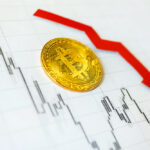Market Capitalization (referred to as market cap for short) is essentially the total value of what a company’s shares are worth on the stock market. It refers to market value based on the share price. It is a term used mainly for the purpose of investment and trading.
When a public company begins trading on the daily exchange market, the rate of its shares is contingent on supply and demand. The more demand to buy shares, the higher the price goes and vice-versa. This valuation determines a company’s future and is expressed as market capitalization.
Table of Contents
How Is It Calculated?
To determine a company’s market cap, you multiply the current share price by the number of outstanding shares.
What that means is, if a company’s share price is $50 and there are 10,000,000 outstanding shares, the market capitalization of the said company sits at $500 million.
Why Is Market Cap Important?
Investors are the ones who can benefit most from market cap but understanding what it represents is essential for anyone in the business world. The market cap helps determine risk and possible rewards. It also determines the size of a company and what stage of growth it is in.
High or Low Market Cap: What Is Better?
Before going further into what low and high market capitalization represent, let’s categorize what they mean:
- Mega-Cap refers to everything over $200,000,000
- High cap is considered anything over $10,000,000
- Low cap is anywhere below $3,000,000
- Mid-cap is everything in between
It is not fair to say that a high-cap value is “better,” as it is not expected for new businesses in the early years.
Mega-Cap is the big league that most businesses could never reach. Tech companies, major car and clothing brands, banks, and mammoth retailers are some of the top market cap companies in the world. Apple has the largest market cap at just under $2.5 trillion.
Companies with a market capitalization of $10 billion and above are usually well-known established companies in stable, mature industries. These are considered the “safest” investments and tend to allow for steady returns, although there is always the risk that a company may be unable to expand further, has peaked, and may see some decline.
Midcap companies are usually established but in less lucrative markets, or industries that have yet to take off. This type of company has a good track record. Mid-cap investments potentially offer more return but are not as safe. The reason for that is that many companies in this bracket are facing competition and are in a make-or-break stage of their growth. They could propel forward into high cap territory or fail to thrive.
Young startups or niche companies tend to fall into the low cap bracket, either through lack of experience, time, or growth possibility. It is not necessarily a bad thing for some companies to have a low market cap: it may simply represent the fact that they are new to the game or have found their place in small-scale industry. Startups are the highest risk investment as they have turbulent waters to navigate before sailing smoothly towards success, but they also have the most potential for high returns. Small-cap startups that could go on to be the next world-dominating idea are far more interesting and exciting for adventurous investors.
There is also such a thing as micro-cap, which are very small-scale investments known as penny stocks. High risk but lucrative, these investments are only for the brave and bold.
Smart investors try to split their capital across companies with varying market caps to help diversify their portfolios and minimize their risk.
What Market Cap Does and Does Not Show?
Although market capitalization shows what a company is valued at on the stock market, it does not represent its true worth. What investors are willing to pay for shares is not necessarily the same as what those shares are worth and what they could be sold for as part of a merger.
It can also be a simple way of comparing one company to another to determine what one has the most future potential. Two mid-level manufacturers ripe for investment could be hard to choose between, but if one has a higher market cap based on what investors are interested in, it could help sway a decision.
Market cap does not show a company’s equity or enterprise value. Other key elements in the valuation of a company are not considered and share prices can easily be misvalued.
Can Market Capitalization Change?
It can, and it does: frequently! Stock prices change any time a company buys or sells shares, with the share price also fluctuating during this time. Because the market cap is based entirely on the current price of one share, it changes everything they do. As businesses grow, so do their share price and market value.
Dilution can also affect market cap. If an eligible investor who has the power to increase the number of shares on the market decides to do so, the stock price gets diluted. Not only does this negatively impact share prices and their holders, but it also changes the company’s overall market cap.
Difference Between Market Cap and Free-Float Market Cap
Every single share is considered and included in a company’s market capitalization, including those held by a government or internal executives. Free float market cap, on the other hand, only counts shares that are publicly traded and up for grabs by anyone.
Free float market capitalization has become the more popular standard for evaluation.
The Bottom Line
Market capitalization is a way of putting a value on a company based on what people are willing to pay to have a piece of it in their pocket. This value can grow over time as a business builds a track record, becomes more known, and generates more success.
The companies with the highest market-caps worth trillions of dollars- Facebook, Amazon, or Microsoft, to name a few- have grown share prices over the years and are stable investments.
WeInvests is a financial portal-based research agency. We do our utmost best to offer reliable and unbiased information about crypto, finance, trading and stocks. However, we do not offer financial advice and users should always carry out their own research.
Read More







